DaVinci Resolve for Beginners
By Alex Berry , Colorist
Learn the essentials of color correcting and color grading video footage with this powerful post-production software
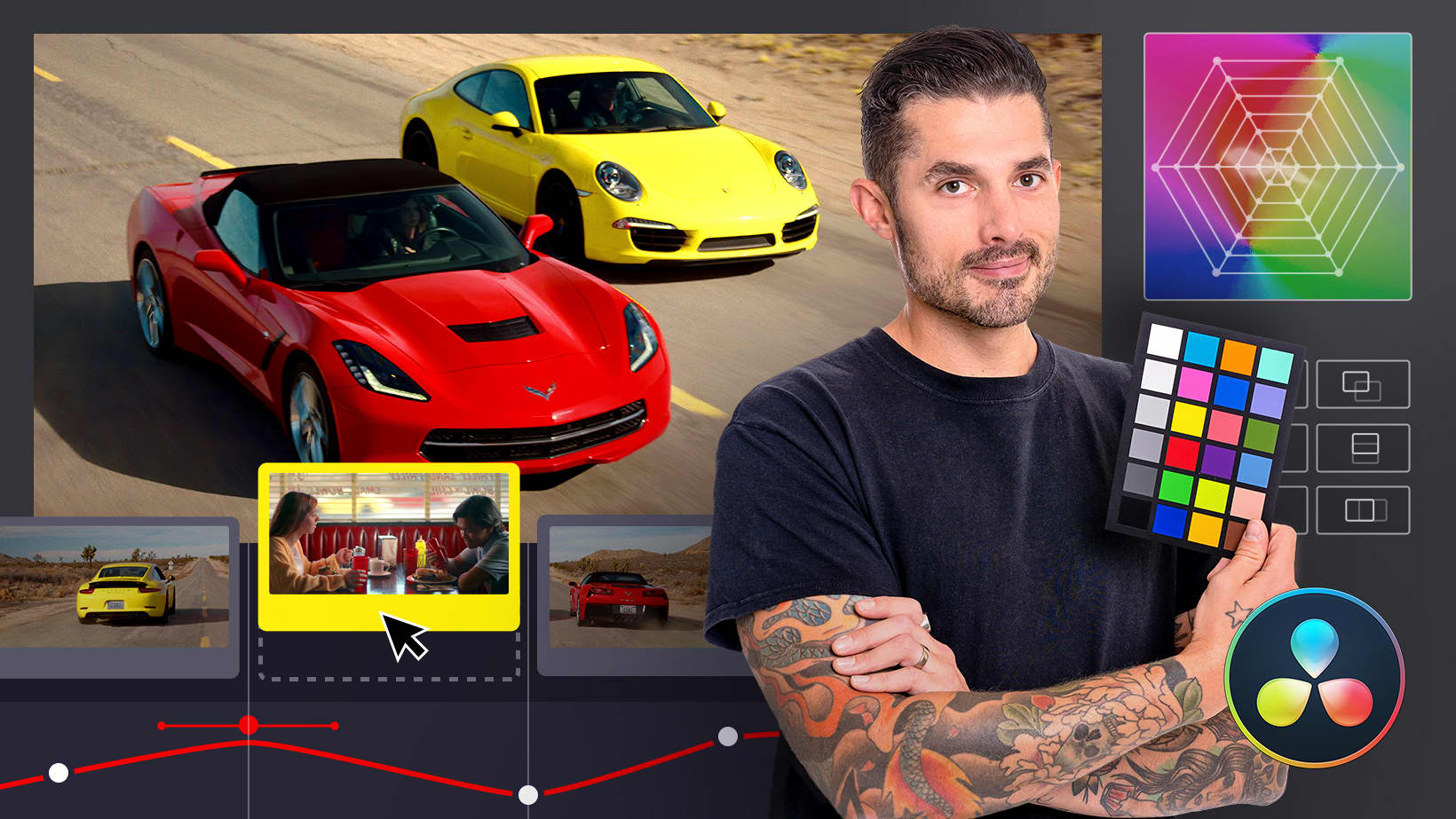
Learn the essentials of color correcting and color grading video footage with this powerful post-production software
Domestika Basics · 6 courses included
-
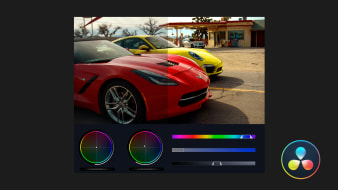
Course 1: Preparing Your Project
By Alex Berry
Learn about color grading and explore the DaVinci Resolve interface
-
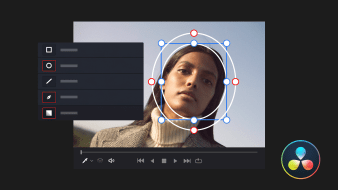
Course 2: Primary Color Correction
By Alex Berry
Balance color and establish mood with basic tools and techniques
-
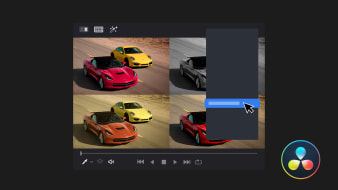
Course 3: Secondary Color Correction
By Alex Berry
Make precise adjustments with keys, power windows, curves, and keyframes
-
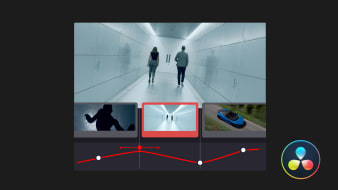
Course 5: Organization and Efficiency
By Alex Berry
Develop your creative workflow with time-saving tips and tricks
-
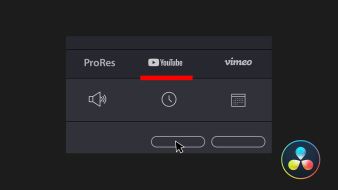
Course 6: Delivering a Graded Film
By Alex Berry
Learn to export footage, backup your project, and share it with others
As a professional colorist, Alex Berry’s job is to help capture a viewer’s attention by enhancing the mood and emotion of a film. What used to be a luxury reserved for only the most high-budget film projects has now become a necessity for any professional project in the audiovisual industry.
In this 6-course Domestika Basics, Alex Berry shows you how to add balance and stylize your video footage with the basic and advanced features offered in the free post-production software DaVinci Resolve.
Get started by meeting your instructor and learning about the concepts and purpose of color grading. Explore the interface of DaVinci Resolve and learn how to prepare your video footage for coloring.
Then, learn the different tools needed to start balancing and correcting color. Discover how to measure and compare adjustments using scopes and levels to match footage between different shots.
See how to make precise adjustments to color with secondary controls like keys, power windows, curves, and keyframes. Discover the Qualifier tool and learn how to make adjustments to specific areas of an image.
Learn Alex’s favorite techniques for giving your film a unique stylized look. Explore LUTs and see how to use scopes to deconstruct and emulate looks you find in the real world.
Maximize your productivity and learn how to be more efficient with your color grading work. See how Alex organizes his workflow with remote grades and node trees.
Finally, learn how to export your video footage and share it with your clients. See the best way to backup a project and database in DaVinci Resolve, and the problems you may encounter with third-party software.
Technical Requirements
To take this course, you will need a computer with DaVinci Resolve installed (free download available online). A basic understanding of video formats and non-linear editing software is nice to have, but is not essential.
- 93% positive reviews (182)
- 12,349 students
- 41 lessons (5h 9m)
- 6 courses
- 32 downloads (20 files)
- Online and at your own pace
- Available on the app
- Audio: English
- English · Spanish · Portuguese · German · French · Italian · Polish · Dutch
- Level: Beginner
- Unlimited access forever
Reviews

By Alex Berry
Alex Berry is a professional colorist from the UK. He began his audiovisual journey working as a runner for a post-production house as a teenager and began teaching himself skills like editing, VFX, cinematography, and color grading.
His work in color grading promos for a British TV station helped him gain the skills and experience necessary to co-found his own creative studio in East London in 2010. Over the last twenty years, he has collaborated on projects for brands like McLaren, Nintendo, Puma, Ralph Lauren, Michael Kors, Airbnb, Clarks, the NHS, FIFA, and more.
Content
Course 1: Preparing Your Project
-
U1
Why Do We Colour Grade?
-
Why Do We Colour Grade?
-
-
U2
Opening Davinci Resolve for the First Time
-
Opening Davinci Resolve for the First Time
-
-
U3
Exporting Your Film from Premiere
-
Exporting Your Film from Premiere
-
-
U4
Importing Footage with XML or Flattened QT
-
Importing Footage with XML or Flattened QT
-
-
U5
Finding Still Images as References
-
Finding Still Images as References
-
-
U6
Log and Raw Terminology
-
Log and Raw Terminology
-
-
U7
Exploring Nodes
-
Exploring Nodes
-
-
U8
Playback Speed and Creating Caches
-
Playback Speed and Creating Caches
-
-
U9
Practice: Preparing Our Media for Grading
-
Practical Exercise - Preparing Our Media for Grading
-
Course 2: Primary Color Correction
-
U1
Primary Controls
-
Primary Controls
-
-
U2
Learning to Use Scopes
-
Learning to Use Scopes
-
-
U3
First Correction - Changing Levels
-
First Correction - Changing Levels
-
-
U4
Second Correction - Changing Colour
-
Second Correction - Changing Colour
-
-
U5
Matching Colour and Contrast between Shots
-
Matching Colour and Contrast between Shots
-
-
U6
Giving Your Film a Feel
-
Giving Your Film a Feel
-
-
U7
Practice: Balancing Then Giving Shots Feeling
-
Practical - Balancing Then Giving Shots Feeling
-
Course 3: Secondary Color Correction
-
U1
Meaning of Secondaries and Using the Qualifier
-
Meaning of Secondaries and Using the Qualifier
-
-
U2
Power Windows and Drawing Shapes
-
Power Windows and Drawing Shapes
-
-
U3
Tracking with Power Windows
-
Tracking with Power Windows
-
-
U4
Curves as Secondaries
-
Curves as Secondaries
-
-
U5
Parallel vs Serial Nodes, and Alpha Channels
-
Parallel vs Serial Nodes, and Alpha Channels
-
-
U6
Using Keyframes
-
Using Keyframes
-
-
U7
Practice: Keys, Trackers, and Keyframes
-
Practical - Keys, Trackers, and Keyframes
-
Course 4: Creating a Look
-
U1
Luts
-
LUTs
-
-
U2
Easy Teal and Orange Split Tone Look
-
Easy Teal and Orange Split Tone Look
-
-
U3
Bleach Bypass Look
-
Bleach Bypass Look
-
-
U4
Cross Processed Look
-
Cross Processed Look
-
-
U5
Low Contrast Vintage Film Look
-
Low Contrast Vintage Film Look
-
-
U6
Assessing and Recreating Looks from TV
-
Assessing and Recreating Looks from TV
-
-
U7
Using Colour Theory in Your Work
-
Using Colour Theory in Your Work
-
-
U8
Practice: Experimenting with Creative Looks
-
Practice: Experimenting with Creative Looks
-
Course 5: Organization and Efficiency
-
U1
Remote Grades, Groups, and Colourtrace
-
Remote Grades, Groups, and Colourtrace
-
-
U2
Organizing the Node Tree
-
Organizing the Node Tree
-
-
U3
Useful Terms
-
Useful Terms
-
-
U4
Grading Control Surfaces
-
Grading Control Surfaces
-
-
U5
Practice: Being More Efficient
-
Practice: Being More Efficient
-
Course 6: Delivering a Graded Film
-
U1
Delivery Interface and Exporting
-
Delivery Interface and Exporting
-
-
U2
Exporting with Handles to Return to Premiere
-
Exporting with Handles to Return to Premiere
-
-
U3
Export Colours and Why They Change
-
Export Colours and Why They Change
-
-
U4
Databases and Project Archiving
-
Databases and Project Archiving
-
-
U5
Practice: Exporting Our Work
-
Practice: Exporting Our Work
-
See the content of the 6 courses
About Domestika Basics
Domestika Basics is a series of courses focused on teaching the most commonly used software by creative professionals worldwide.
The content has been meticulously curated and is intended for both students going into a new creative field and more experienced professionals who want to polish their skills.
Learn with the best Domestika teachers through practical lessons, tons of resources, and a progressive difficulty that'll allow you to see results from day one.
Domestika Basics will allow you to step up your professional game and be prepared to score better projects.
-
Without prior knowledge.
Domestika Basics gives you everything you need to get started in a new creative field and become an expert in it.
-
Focused on the tool.
Discover its main components, techniques, and the tried-and-true methods you need to master it.
-
Learn fast
With a straightforward, step-by-step approach, our outstanding professionals will teach you how to get the most out of the program.
-
Certificates Plus
If you're a Plus member, get a custom certificate signed by your teacher for every course. Share it on your portfolio, social media, or wherever you like.



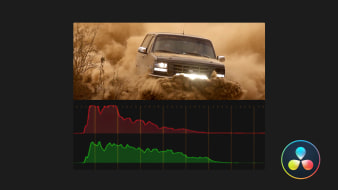




juancamilospinaosorio
Plusun gran primer acercamiento a Davinci
View translation
Hide translation
nikola_grkovic_
This coures cover all you need to start use Davinci Resolve for Color Correction
kierotheone
Hasta donde voy, es claro en su explicación
View translation
Hide translation
p2pc8jqmby
Dice que se le pueden colocar subtítulos en español, pero no funciona. Hice el intento con otros idiomas y si aparecen pero en español no.
View translation
Hide translation
roro_s
Great color grading focused course.